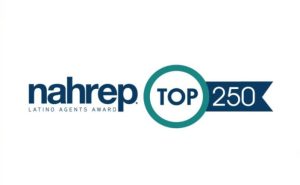In a competitive market where the incentive is not a paycheck, how do you attract someone to your company? The word “attract” is the first clue! According to dictionary.com, the definition of attract is “to draw by appealing to the emotions or senses, by stimulating interest to cause to approach, by exciting admiration”.
At Better Homes and Gardens® Real Estate, we intentionally refer to recruiting as ‘Talent Attraction’ because it perfectly represents the “how-to’s” for being successful. We attract potential real estate professionals by appealing to their emotions or senses, thus stimulating interest.
We constantly ask ourselves the question, “What do we have to do to be attractive to real estate professionals?” Talent attraction is more than a recruiting strategy. We must appeal to the senses of a real estate professional in order to draw their attention and encourage interest.
Understanding and demonstrating what is important to a real estate professional requires a systematized approach. At BHGRE®, we start with three fundamental steps in order to differentiate ourselves. We call these our differentiators. They help us, and can help you, attract the type of real estate professionals that fits our company culture.
1. Analyze your competition
Differentiating yourself requires identifying and analyzing your top three competitors. Things you want to consider are:
- What are their core values and culture – and are they identifiable or obvious?
- What is the compensation package or economic model? This includes commission splits, tech fees, team structure, tools, technology and support.
- What do they offer their agents in the form of training, marketing, social media, or even consumer content?
- Do they offer a marketing system or a business planning system?
Analyzing your competition helps to identify what sets you apart.
2. Define Your Differentiators
Once you understand your competition, you can define how you are different than others in the market. We call this establishing your differentiators. Questions to ask are:
- What do you offer that is different than others?
- What makes you unique or stand out from the crowd?
- Is it the way you offer those things that differentiates you?
- What do you do better than others?
- What is your competitive advantage?
The answers to these questions helped us define our key areas of value or value proposition.
To take it even further, identify at least one competitive metric that is a strong selling point and can easily be used in conversation. Use this metric to illustrate how you are different so it creates interest and leaves the prospect wanting to hear more. As an example, “BHGRE real estate professionals average 15 closed transactions per year. The MLS average is 8 closed transactions.”
3. Communicate Your Differentiators
Identifying your differentiators then enables you to create a meaningful way to speak about each of your key areas of value. Begin by discussing these with others within your own organization. Collaboration with others is a way to test your differentiators and discuss narratives that will get interest and attention.
Think of it this way, “What will you say so that when a potential prospect hears it they want to find out more?”
Once you can speak powerfully about your value proposition, the next part of this process is to determine how to demonstrate your differentiators. For example, if you have advanced business or real estate training, how could you demonstrate this so a potential prospect can experience what you offer? In this case, you might invite them to one of your training events or team meetings so they can experience first-hand. Alternatively, a success story or testimonial to demonstrate your value can be powerful.
These steps form the foundation for a powerful story that you can use in conversations, for email marketing, social media, and all of your Talent Attraction lead generation activities. Take advantage of what makes you different and what sets you apart by learning how to effectively communicate it. This will help you build a brand that appeals to your target audience.
Do you know what your differentiators are and the best way to communicate them?








